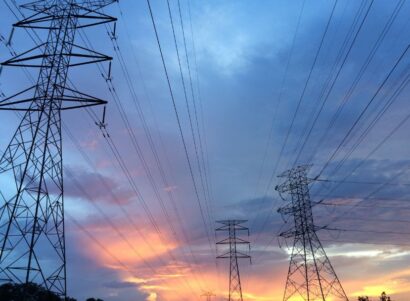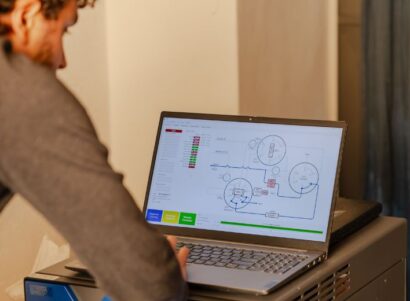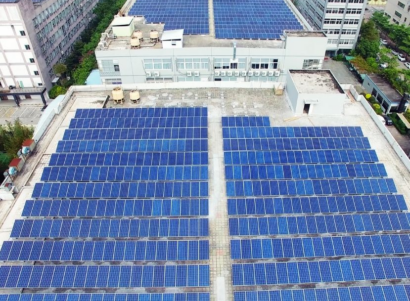August 21, 2019
For Immediate Release
Contact: Alex Abu-Hakima: (510) 330-5551, alexah@psehealthyenergy.org
Study shows which disadvantaged communities State programs must target to improve access
OAKLAND, CA – California leads the nation in the adoption of rooftop solar systems, but information on which communities do, and do not, benefit from these installations has been limited to broad income classifications and anecdotal observations. Now, the data is in: The adoption of distributed solar – rooftop installations as opposed to industrial-scale operations like solar farms – is closely correlated with socioeconomic status as well as with health, environmental and demographic indicators. The study, published online August 20 in Energy Policy, is the first peer-reviewed analysis of distributed solar adoption in disadvantaged communities.
Solar adoption rates in California’s 5 percent most disadvantaged communities are more than eight times lower than in the state’s 5 percent least disadvantaged communities, researchers found, as identified using CalEnviroScreen, the state’s environmental justice screening tool. Researchers analyzed solar adoption at the census-tract level and they also looked closely at which characteristics of these communities were correlated with solar adoption.
“Income is a big factor in predicting who adopts solar, but it’s not the most important factor,” said lead author Boris Lukanov, PhD, a researcher at Physicians, Scientists and Engineers for Healthy Energy (PSE), the Oakland-based energy science and policy institute. “There is a combination of factors that are more powerful together than any one individually.” In addition to poverty, housing burden, linguistic isolation and low educational attainment rates are three key factors, that, taken together, are correlated with low rooftop solar energy adoption rates in communities across California. “That suggests that it’s not only about financial resources or socioeconomic status. It’s also about knowledge and access to information,” Dr. Lukanov said.
The findings have implications for how the state incentivizes solar in the future. Historically, California utilities have directed clean-energy subsidies towards “low-income” households – those earning 80 percent or less of a region’s median income, according to California Department of Housing and Community Development. The study indicates that these programs have been insufficient to reduce inequities in access to rooftop solar, despite recently improving trends.
By comparison, CalEnviroScreen, a tool developed in 2013 by the California Office of Environmental Health Hazard Assessment, measures multiple factors that can contribute to a community’s vulnerability to pollution and its effects compared to the general population, including income level, linguistic isolation, rates of education and employment, health indicators such as asthma rates, and environmental burden indicators such as proximity to hazardous facilities.
California uses CalEnviroScreen to channel State cap-and-trade funds towards clean energy investments in disadvantaged communities. But limited data has hindered an analysis of the success of past programs. Now, newer programs such as the Disadvantaged Communities–Single-Family Affordable Solar Homes program, which incentivizes homeowners in disadvantaged communities to go solar, can be compared to the relevant existing adoption rates.
“Our study provides the first apples-to-apples baseline to measure how well new programs perform,” said Elena Krieger, PhD, director of PSE’s clean energy program and study co-author. “Accurately tracking the efficacy of existing and new solar programs will help us develop more effective policies and strategically design incentives to target disadvantaged communities.”
The correlations in the study are associations, not causes, the researchers stress, but they say the findings identify specific issues to further explore so that policies can be aimed squarely at overcoming barriers to solar adoption.
Health, resiliency, and grid co-benefits
Understanding and overcoming the barriers to adopting solar photovoltaic energy generation is key to ensuring that the state’s most disadvantaged communities also get the benefits of rooftop solar that more privileged communities have enjoyed for years, Dr. Krieger said. In addition to lower bills, consistent bills can help households avoid electricity cut-offs by avoiding costly seasonal spikes. In some communities where local loads are served by nearby gas power plants, replacing these polluting facilities with local storage and distributed solar can positively impact local air quality, reducing a community’s environmental burden.
Maximizing the potential of clean energy technologies is also an important step in reaching California’s ambitious emissions-reduction goals.
“And it may provide benefits to the grid,” Dr. Krieger said. “You’ll increase solar, along with storage, in places that may not have had it and you’ll have more of an equal distribution of energy sources.” That can increase a region’s resilience during electric shut-down events from fires and extreme heat, Krieger says, which are predicted to increase as the climate warms. “If we can figure out how to access these communities for solar, ideally we can leverage those relationships and policies to set a precedent for adopting storage and other emerging technologies, increasing equitable access going forward.”
Other states are already emulating California’s focus on environmental justice. Michigan is piloting an environmental justice tool, and New York is starting to incorporate environmental justice considerations into how it sites power plants.
“California is setting a precedent here, so the implications are broad – for how to encourage equitable solar adoption and how to implement all clean energy technologies,” Dr. Krieger said.
- Read the study, “Distributed solar and environmental justice: exploring the demographic and socio-economic trends of residential PV adoption in California”
- Go to CalEnviroScreen
# # #
Physicians, Scientists and Engineers (PSE) for Healthy Energy is a nonprofit research institute dedicated to supplying evidence-based scientific and technical information on the public health, environmental and climate dimensions of energy production and use. We are the only interdisciplinary collaboration focused specifically on health and sustainability at the intersection of energy science and policy. Visit us at psehealthyenergy.org and follow us on Twitter @PhySciEng.












